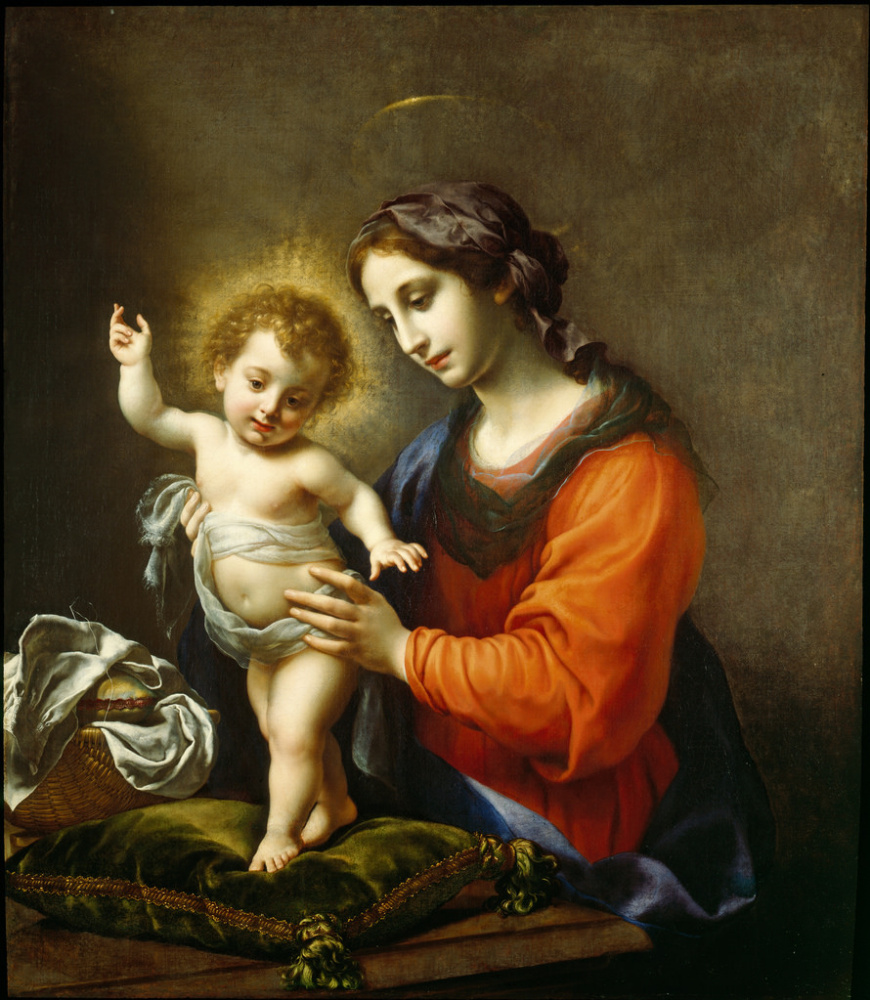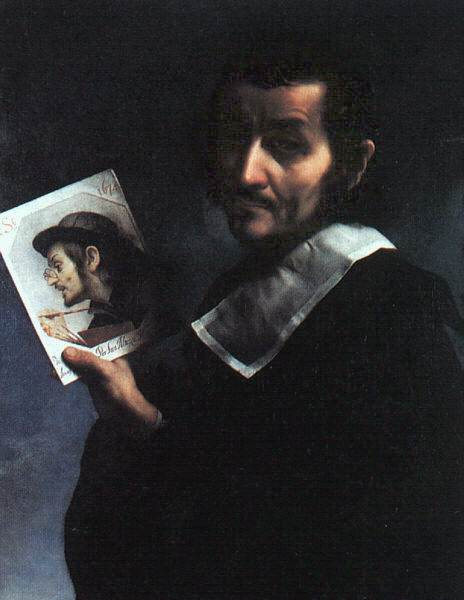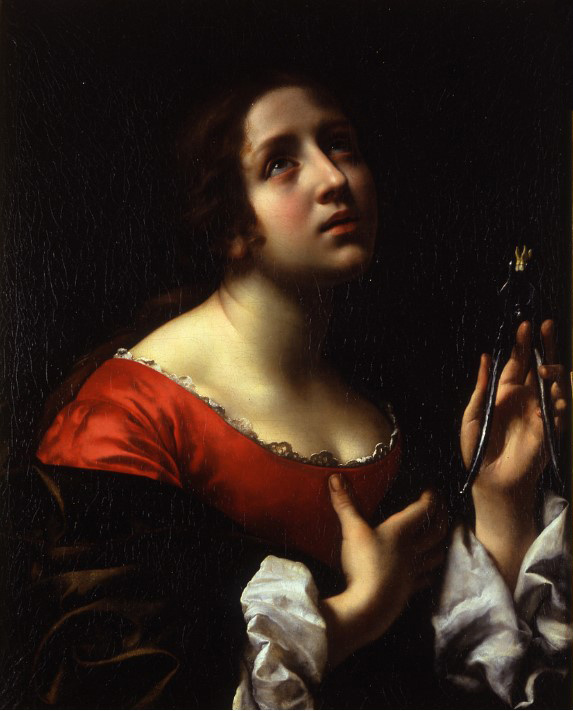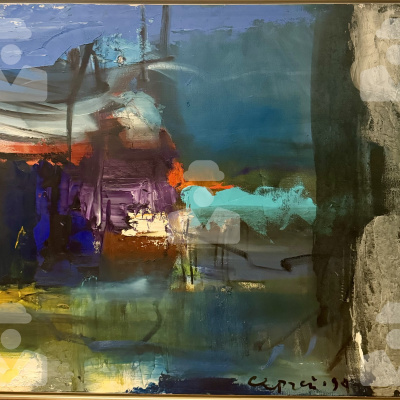
Carlo (or Carlino) Dolci (1616 — 1686) was known for highly finished religious pictures, often repeated in many pieces of art. His first artworks went back to the mid 1620s, when he apprenticed at a young age to Jacopo Vignali. We could not say that he was a prolific artist. "He would take weeks over a single foot", according to his biographer Filippo Baldinucci. Because of his meticulous and laborious manner of painting Dolci avoided large commissions to paint frescoes. His artworks were not large though some of his full size paintings survived.
Carlo Dolci, The Double Self-Portrait (1674)
Some details from Carlo Dolci's life history
Carlo Dolci was known for his piety. It is said that every year during Passion Week he painted a half-figure of the Savior wearing the Crown of Thorns.
Dolci’s daughter, Agnese (died in 1680), was also a painter and produced a few nice replicas of her father’s artworks.
Dolci appeared constitutionally blind to the new aesthetic, he fitted into a long tradition of prestigious official Florentine painting that held each drawn figure under a microscope of academicism. The artist was criticized for his touch "inexpressibly neat … though he has often been censured for the excessive labour bestowed on his pictures, and for giving his carnations more of the appearance of ivory than the look of flesh".
Carlo Dolci. The Penitent St. Peter (1650-s)
The Medici’s Painter: Carlo Dolci and 17th-Century Florence exhibition is focused on the revival of the artist’s reputation and attraction of the attention of the public to his works. The oeuvre of the artist is considered to be an important diplomatic, political and cultural instrument in the history of Florence.
This showcase is the most ambitious project at the Davis Museum dedicated to
Old Masters. It includes more than half a hundred authenticated artworks provided by private collectors and large international institutions including the Uffizi Gallery and Palazzo Pitti in Florence, the Louvre Museum in Paris, The Metropolitan Museum of Art in New York, the J. Paul Getty Museum in Los Angeles, and the Museum of Fine Arts Houston, among others.
Carlo Dolci. The Penitent Magdalen (about 1670) from the collection of the Davis Museum is an attribute of the Medici’s Painter: Carlo Dolci and 17th-Century Florence exhibition.




















